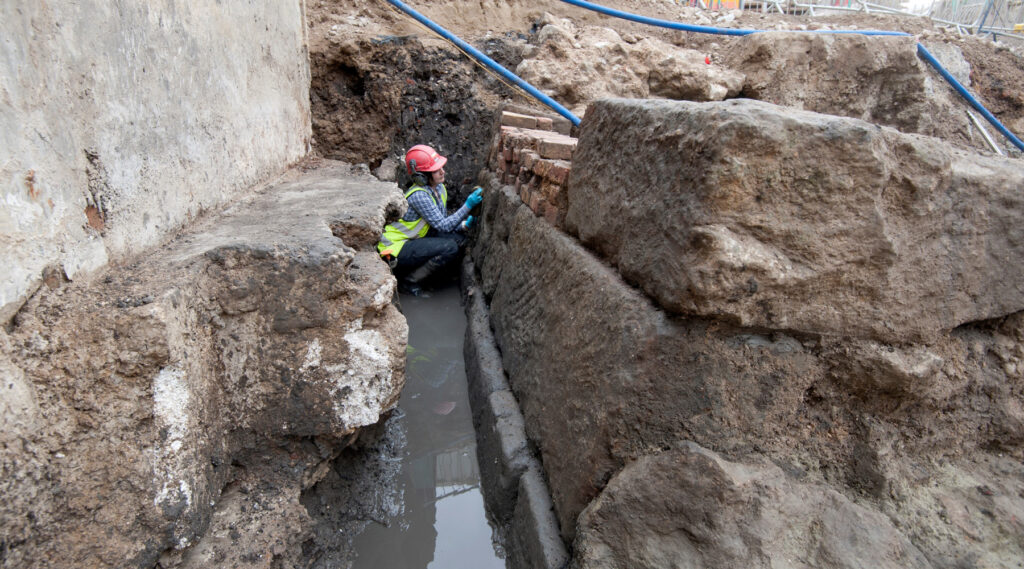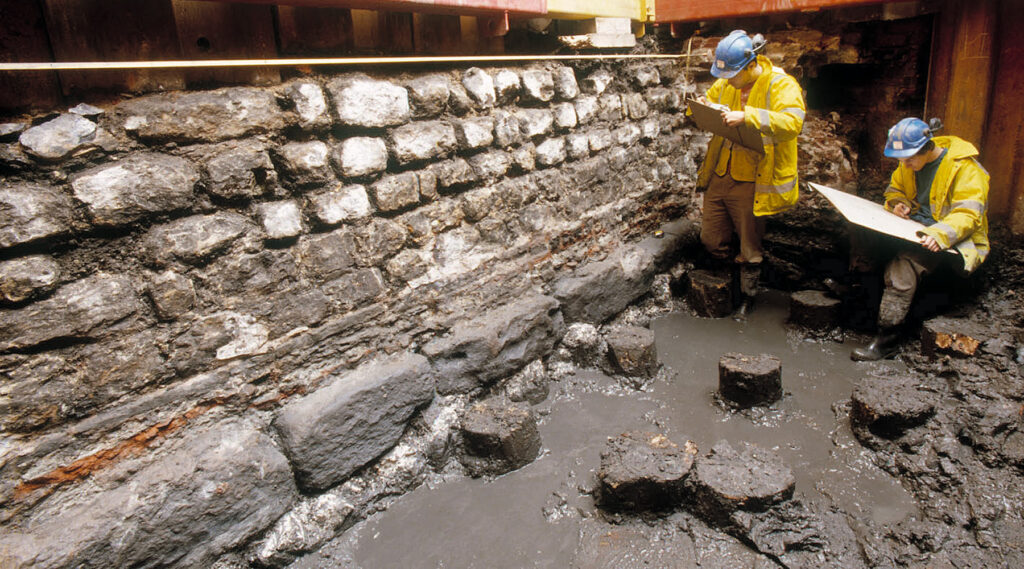Three large sections of a previously unknown Roman wall discovered under the City of London in recent years have been designated as scheduled monuments in the National Heritage List for England.
Although the Roman Wall that surrounds the old city is well known, what’s been discovered is a relatively unknown riverside wall that was constructed later and severed the city’s connection to the Thames docks, indicating that at the time defence had taken priority over river trade.
It may also have been built to reinforce the status of the city though.
Together the landward and riverside walls formed a vast circuit. No other town in Roman Britain had defences enclosing such a large area, a feat reflecting the status of this provincial capital, Londinium.
Over the last 1,700 years, much of the wall has been destroyed as London has grown. However, thanks to recent archaeological investigations, three new sections have been discovered, recorded and are now protected by law.
Alongside the Roman wall, excavations by MOLA (Museum of London Archaeology) between 2006–2016 uncovered exceptionally well-preserved wooden wharf and quay structures from both the Roman and medieval periods.
Having been studied by the archaeologists, the remains of the Roman riverside wall have been left in-situ underground. They are now below modern buildings along Upper and Lower Thames Street, which once formed the north foreshore of the River Thames.

Excavations by MOLA at Sugar Quay showing the exceptionally well preserved timbers of the Roman box quay (c) MOLA
The designation of the remains as a scheduled monument has been confirmed by the Department for Culture, Media and Sport following Historic England’s advice.
Duncan Wilson, Historic England Chief Executive, said: “Even in a really dense city like London, built up over 2000 years, there are still mysteries to be revealed right beneath our feet. The riverside wall remains an intriguing element of Roman London which raises almost as many questions as it answers. The construction of the riverside wall effectively cut off the once bustling port, but why? It seems to suggest a major move towards defence at a time of uncertainty for the Roman provinces.
“By adding these sites to the National Heritage List we recognise their national significance, and can closely manage their conservation so that they remain part of London’s rich story.”
There are only four sites currently known where the Roman riverside wall survives in-situ. All are now protected as scheduled monuments.

MOLA archaeologist cleaning the monumental masonry of the Roman riverside wall at Sugar Quay (c) MOLA
Three new scheduled monuments
Riverbank House, Upper Thames Street
Underneath Riverbank House on Upper Thames Street over 20 metres of stone riverside wall survives, in some places up to 1.4m high above the foundations. There was also a long succession of timber Roman quays, used for loading and unloading boats, which demonstrate an exceptional level of preservation and survival for organic remains.
The mid-2nd century quay is indicative of a major investment in the Roman dockside infrastructure during this period and is of considerable significance to our understanding of Roman London’s port.
The area covered by the Roman wharves also includes a medieval building surviving as buried remains.
Sugar Quay, Lower Thames Street
At Sugar Quay, 45m of the riverside wall was recorded. Roman quayside structures were also found on this site. The wall replaced a substantial ‘box quay’ dating to around 133AD made of thick oak beams stacked on top of each other, surviving to three layers high, and resting on oak piles.
Partial excavation recorded at least two even earlier quayside structures dating from the late 1st century. Remains of a later, medieval ‘bulwark style’ timber river wall from the late 12th century was also found.
Three Quays, Lower Thames Street
Excavation at Three Quays found a Roman quay extending up to 35m, including piles reusing exceptionally rare remains of a wooden cornice or pediment from a building – thought to be unique in Britain.
A mid-2nd century quay up to 2m high was also excavated and recorded, as well as remains of the riverside wall.
There was also a succession of medieval quayside structures, largely formed of timber revetments – wooden planks placed to support and retain the waterfront – as well as a 14th-century river wall, followed by two river walls built in 17th- and 18th-centuries.








Humbling.
Thank you.